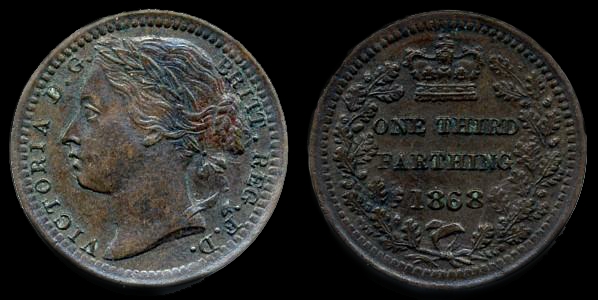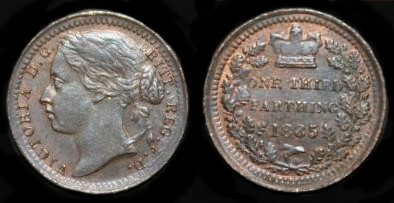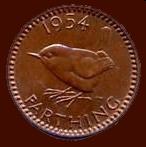








Designed by Nigel G Wilcox






The Paragon Of Metal Detecting
Powered By Sispro1
British Sterling Currency - Numismatics,
Third-Farthing
For Reference ONLY
Everything For The Detectorist
Third Farthing


Victoria 1837-1901 AD
Copyright All Rights Reserved by Nigel G Wilcox E-Mail: ngwilcox100@gmail.com
Royal Monarchy
INFORMATION - DATA
Pages
Fractional farthings were initially introduced in 1827, in the form of a third farthing in Malta. These fractional coins were produced to accommodate the differences in living costs between some of the colonies and the UK. It was found that some of the colonies required smaller denominations to facilitate local trade and therefore they were produced as a colonial currency, but are commonly recognised as part of the British pre-decimal currency system.
Third farthings (1827 - 1913) were produced to be used in Malta. The Grano (introduced before British Rule) was the standard local currency which was equivalent to 1/12 of a penny. A decision was therefore made to introduce a denomination equivalent to the existing currency.
Half farthings (1828 - 1856) were produced to be used in Ceylon. The reasoning behind the introduction was similar to the third farthing in that it facilitated local trade, and yet remained in line with the British Currency. Half Farthings actually became legal tender in the UK in 1842 although they were not popular due to the fact they were considered to be a denomination that was too small.
Quarter farthings (1828 - 1856) were produced to be used in Ceylon. These are considered the smallest denomination although they were not strictly a British coin. A staggering 3840 of these coins were required to make a pound (20 shillings)
Third farthings (1827 - 1913) were produced to be used in Malta. The Grano (introduced before British Rule) was the standard local currency which was equivalent to 1/12 of a penny. A decision was therefore made to introduce a denomination equivalent to the existing currency.
Half farthings (1828 - 1856) were produced to be used in Ceylon. The reasoning behind the introduction was similar to the third farthing in that it facilitated local trade, and yet remained in line with the British Currency. Half Farthings actually became legal tender in the UK in 1842 although they were not popular due to the fact they were considered to be a denomination that was too small.
Quarter farthings (1828 - 1856) were produced to be used in Ceylon. These are considered the smallest denomination although they were not strictly a British coin. A staggering 3840 of these coins were required to make a pound (20 shillings)
Victoria

Main Coin Menu
Member NCMD
6. S. Menu

VIEW ALL MENUS
























